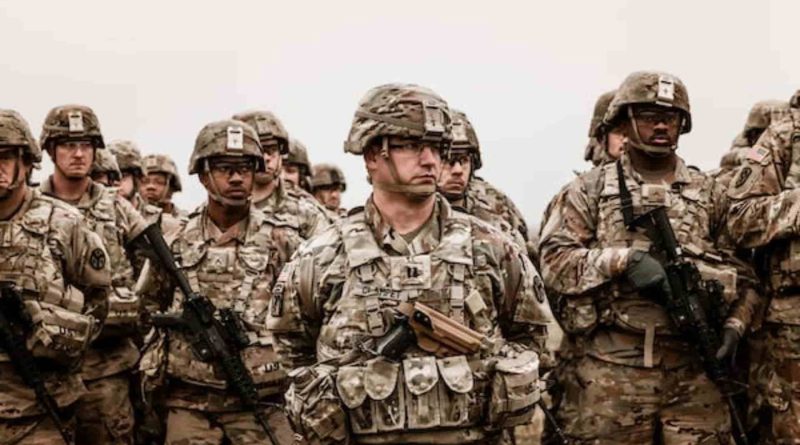Under the Radar: CIA-Trained Ukrainian Paramilitaries Brace for Russian Incursion
Amid the specter of a potential Russian incursion, there lies a pivotal role that could be assumed by CIA-trained Ukrainian paramilitary forces.
As per insights from five former intelligence and national security officials well-versed in the matter, an undisclosed intensive training endeavor in the United States is being orchestrated by the CIA, targeting elite Ukrainian special operations units and intelligence operatives. Commencing in 2015, this clandestine program finds its base in a Southern U.S. facility, according to assertions by certain officials.
In light of the mounting presence of Russian troops along Ukraine’s eastern border, ostensibly signaling preparations for an invasion, these CIA-trained forces could emerge as a linchpin. Although discussions between the U.S. and Russia commenced in Geneva earlier this week regarding security matters, tangible agreements have remained elusive.
While the covert initiative, led by paramilitary operatives under the CIA’s Ground Branch—now formally designated as the Ground Department—was instituted during the Obama administration after the 2014 annexation of Crimea by Russia, its scope expanded under subsequent administrations, including the present Biden administration, as indicated by a former senior intelligence official with ties to government circles.
By 2015, as part of the broader anti-Russia thrust, CIA Ground Branch paramilitary personnel began making forays to the eastern Ukrainian front to offer counsel to their local counterparts, according to accounts from several former officials.
The multi-week CIA program conducted within the U.S. encompasses a curriculum spanning firearms proficiency, camouflage methodologies, terrain navigation, strategic maneuvers such as “cover and move,” and intelligence gathering, among other domains, as relayed by ex-officials.
Disputes arise in characterizing the nature of this program. Across three presidential administrations, deliberations have revolved around the extent and nature of military support to Ukraine, with deliberations often dissecting the offensive-defensive dichotomy.
U.S. officials vehemently refute any insinuation of an offensive orientation to the CIA training program, emphasizing its purported aim of bolstering intelligence-gathering capabilities, according to a current senior intelligence figure.
Nevertheless, the delineation of intelligence support in a paramilitary context remains nebulous. Moreover, how Ukrainian forces might deploy this training could swiftly evolve in response to on-ground realities.
The program encompasses highly specialized training geared towards augmenting Ukrainian capabilities to counter Russian aggression, contends the former senior intelligence official.
The prospect of Russian intervention could potentially render the training, which includes tactical elements, markedly offensive, cautions another former official.
A more candid assessment portrays the United States as fostering an insurgency, asserts a former CIA official, alluding to the program’s imparting of skills conducive to combatting Russian forces.
While the program was ostensibly not structured to prepare for insurgency, its components encompass training relevant to such scenarios, including techniques for maintaining secure communications in hostile environments, as recounted by a former agency official.
Contrary to assertions of insurgency facilitation, the current senior intelligence official vehemently denies any such intent behind the program’s design.
Decades-long collaboration between the CIA and Ukrainian intelligence units has aimed at buttressing Kyiv’s autonomy and thwarting Russian subversion, with cooperation intensifying post-Crimea annexation, divulging a former CIA functionary.
The CIA’s presence in Ukraine, predominantly comprised of paramilitary personnel, remains minimal, focused on equipping Ukrainian forces to safeguard potential focal points in the event of a Russian incursion deeper into the country, explains the former agency executive.
Despite competing demands on the agency’s paramilitary assets, the U.S.-based training initiative has consistently ranked as a top priority since its inception during the Obama era, underscores the former senior intelligence official.
Operationally, the program did not necessitate nor receive fresh presidential authorization, operating within existing frameworks, clarify former officials.
The Trump administration, in response to congressional pressures, augmented funding for the program, resulting in an expanded annual intake of Ukrainian cohorts to the U.S., reminisces former officials.
Distinguishing between training forces and actively supporting an insurgency in the aftermath of a Russian invasion constitutes a nuanced distinction, prompting the Biden administration to convene a task force to explore avenues through which the CIA and other U.S. agencies could assist a prospective Ukrainian insurgency.
Should a large-scale incursion materialize, graduates of CIA programs could evolve into militia leaders and insurgents, postulates the former senior intelligence official, highlighting the program’s potential strategic impact.
Acknowledging the efficacy of CIA training programs over the years, a former CIA executive attests to their instrumental role in altering the operational landscape.
Notwithstanding pessimistic assessments of Ukrainian forces’ ability to repel a Russian onslaught, both U.S. and Ukrainian representatives envisage sustained resistance from Ukrainian insurgents, thwarting Russia’s prolonged territorial retention, according to former officials.
The intimate collaboration with Ukrainian counterparts has been fraught with unique challenges, note former officials. Concerns over Russian infiltration have loomed large, prompting cautious measures to mitigate risks of compromise.
Trump-era protocols underscored the importance of circumspection, refraining from divulging information to Ukrainian counterparts that could potentially compromise operational security vis-a-vis Russian intelligence, recalls a former national security official.
Adherence to security protocols was rigorously enforced, with instances of trainees being repatriated for breaches such as unauthorized possession of electronic devices, reveals the first former CIA official.
Heightened apprehensions of Russian reprisals against program graduates upon their return to Ukraine were underscored by CIA officials, reflecting a longstanding concern over Russian penetration of Ukrainian intelligence circles, a persistent challenge for the agency.
Despite these challenges, the CIA maintains that the training program, while susceptible to Russian influence, has yielded significant dividends in bolstering Ukrainian resistance to potential Russian aggression.

